NICK CAVE
Artist, Community Builder, and Educator

By Rowan Beaird
The expansive, white-walled studio where Stephanie and Bill Sick Professor of Fashion, Body and Garment Nick Cave teaches isn't a typical fashion classroom.
Yes, there are dress forms propped up next to tables and fabric scraps puddled on the tile floor, but there are also papier-mâché statues of eyeballs sprouting feet, laser-cut mirrors, and a shelf lined with Beanie Babies. Students hunch over avant-garde crochet overlays and eight-inch tall rainbow heels. This is one of the studios for the School of the Art Institute of Chicago’s (SAIC) two-year Fashion, Body and Garment program, which Cave helped launch nearly 15 years ago.
It’s a perfect environment for Cave, a seminal, interdisciplinary artist whose first career retrospective is on view at the Museum of Contemporary Art Chicago (MCA) from May 14 through October 2. “This is the next generation of artists and creators, and I'm interested in seeing and experiencing what their vision is going to look like,” he shared. “I'm interested in what they bring to the table, helping them problem solve and establish a particular point of view.”
Cave first came to the School as a faculty member after receiving his master of fine arts at the Cranbrook Academy of Art in 1989. Since the beginning of his journey as an artist, Cave has experimented with many different mediums such as sculpture, performance, and video, refusing to be confined to one form of expression. SAIC’s emphasis on exploration was a natural fit.
“As a young artist, I remember going to artist residencies and I would literally just grab my backpack,” Cave said. “I would ship nothing. I would bring nothing. I would be like, well, I'm going to figure it out when I get there. And that's when I started to sort of have this massive expansion on material language. I found that it helped me connect with the materials that would support the idea, because not everything can be realized through fashion or sculpture or performance.”
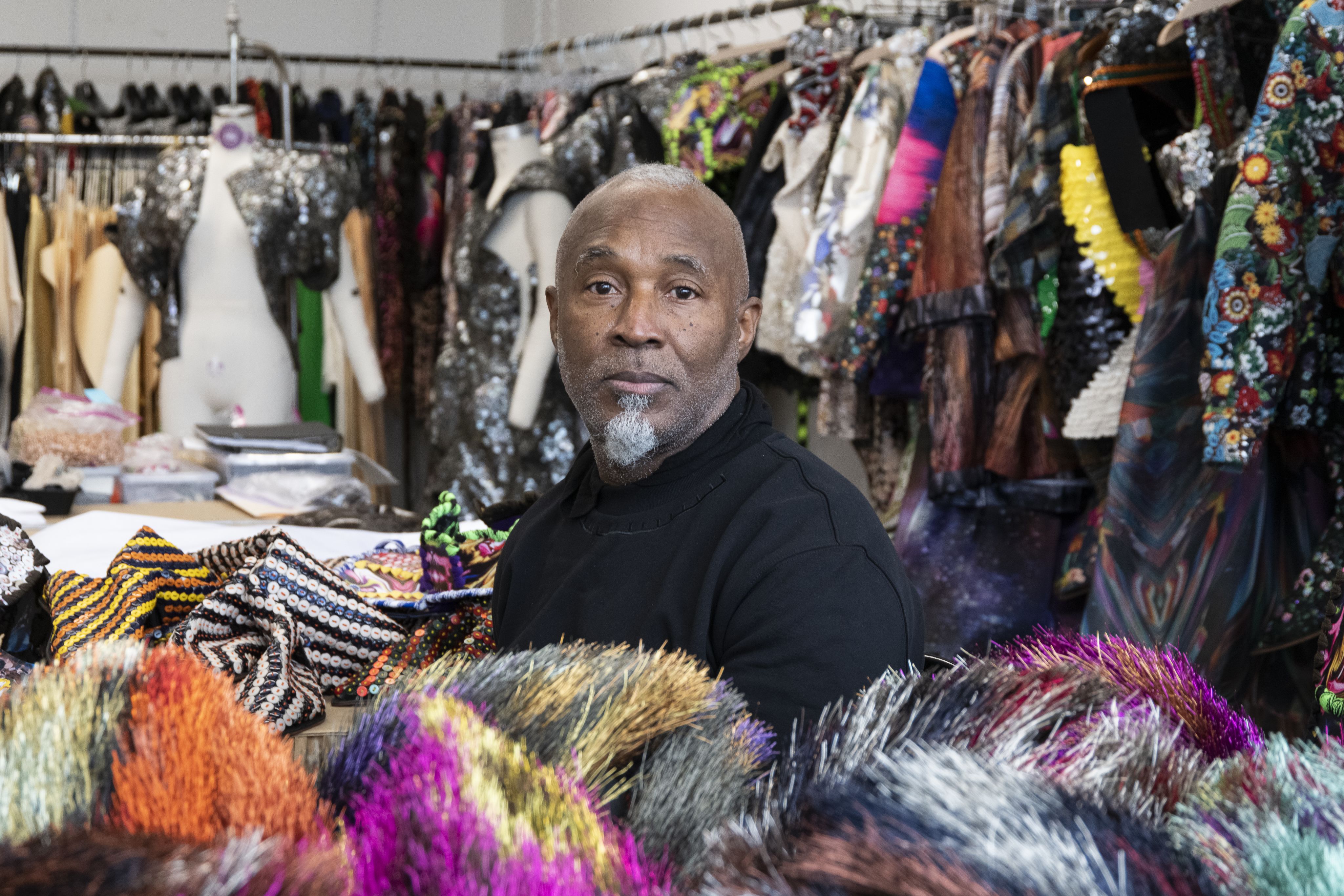
Cave at his studio. Photo: Jim Prinz
Cave at his studio. Photo: Jim Prinz
This is the exact process through which one of Cave’s notable creations, his Soundsuits series, was born. When Rodney King was brutally assaulted by Los Angeles police officers in 1991, Cave began to gather sticks and twigs, assembling them into a makeshift suit of armor that concealed the wearer’s race and gender. “My entire practice completely turned on its head,” he shared. He’s since created hundreds of Soundsuits with a dynamic, unpredictable array of materials, from sequins to flowers to ceramic birds. They’ve been exhibited and used in performances, transforming both the work of art and the wearer into something joyful and somber, familiar and unknown.
This spirit of spontaneous discovery is felt in Cave’s classroom. He’s a warm, encouraging educator, kneeling on the floor to see a pair of structural pants at a different angle, inverting a student’s coat to demonstrate how shapes can be reimagined. He cares about technique. Cave also says that what’s most important are the emotions of the piece and how students are pushing themselves to think more expansively, to go deeper within, and to look outside of themselves.
“This is the next generation of artists and creators, and I'm interested in seeing and experiencing what their vision is going to look like. I'm interested in what they bring to the table, helping them problem solve and establish a particular point of view.”
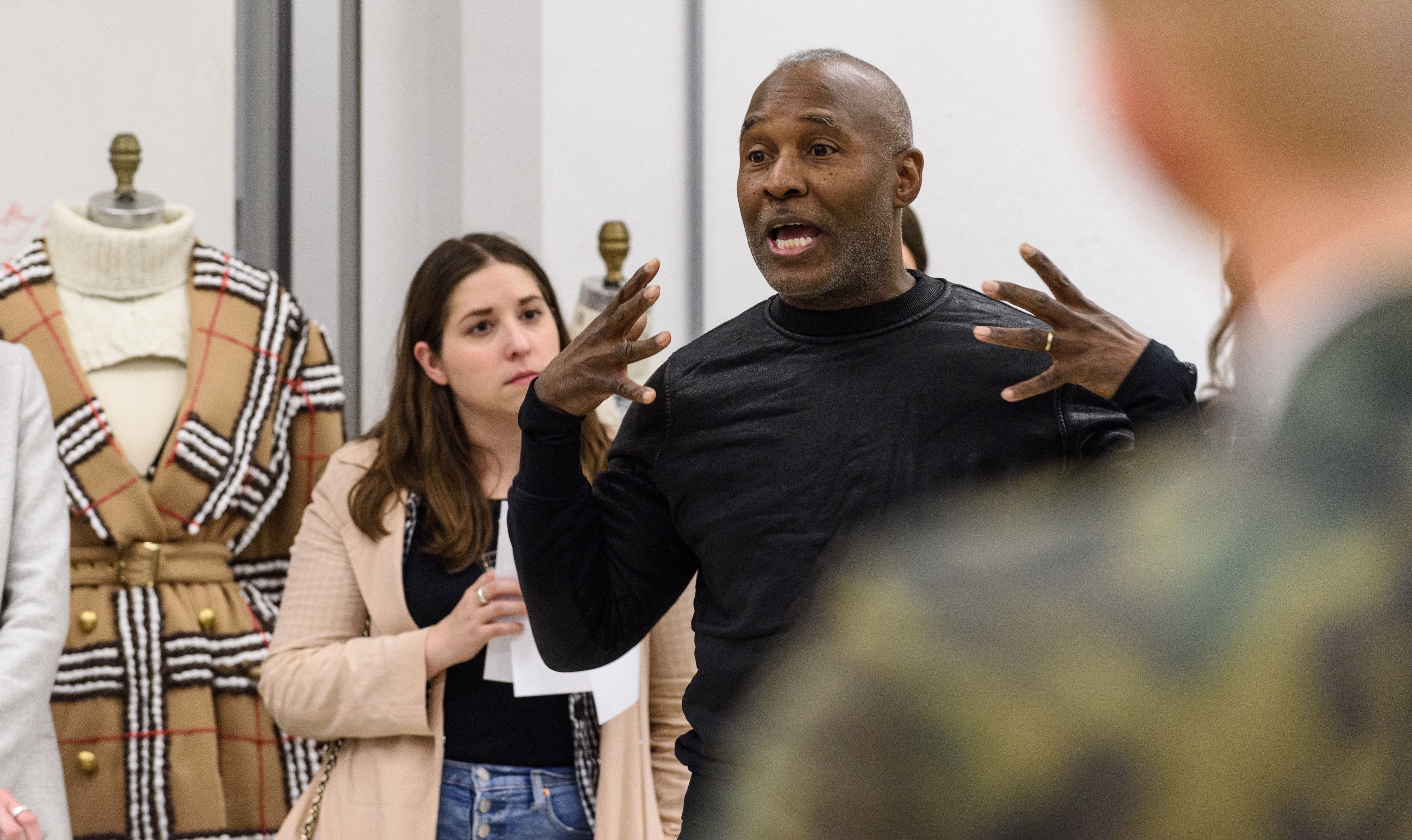
Cave speaking to students at SAIC
Cave speaking to students at SAIC
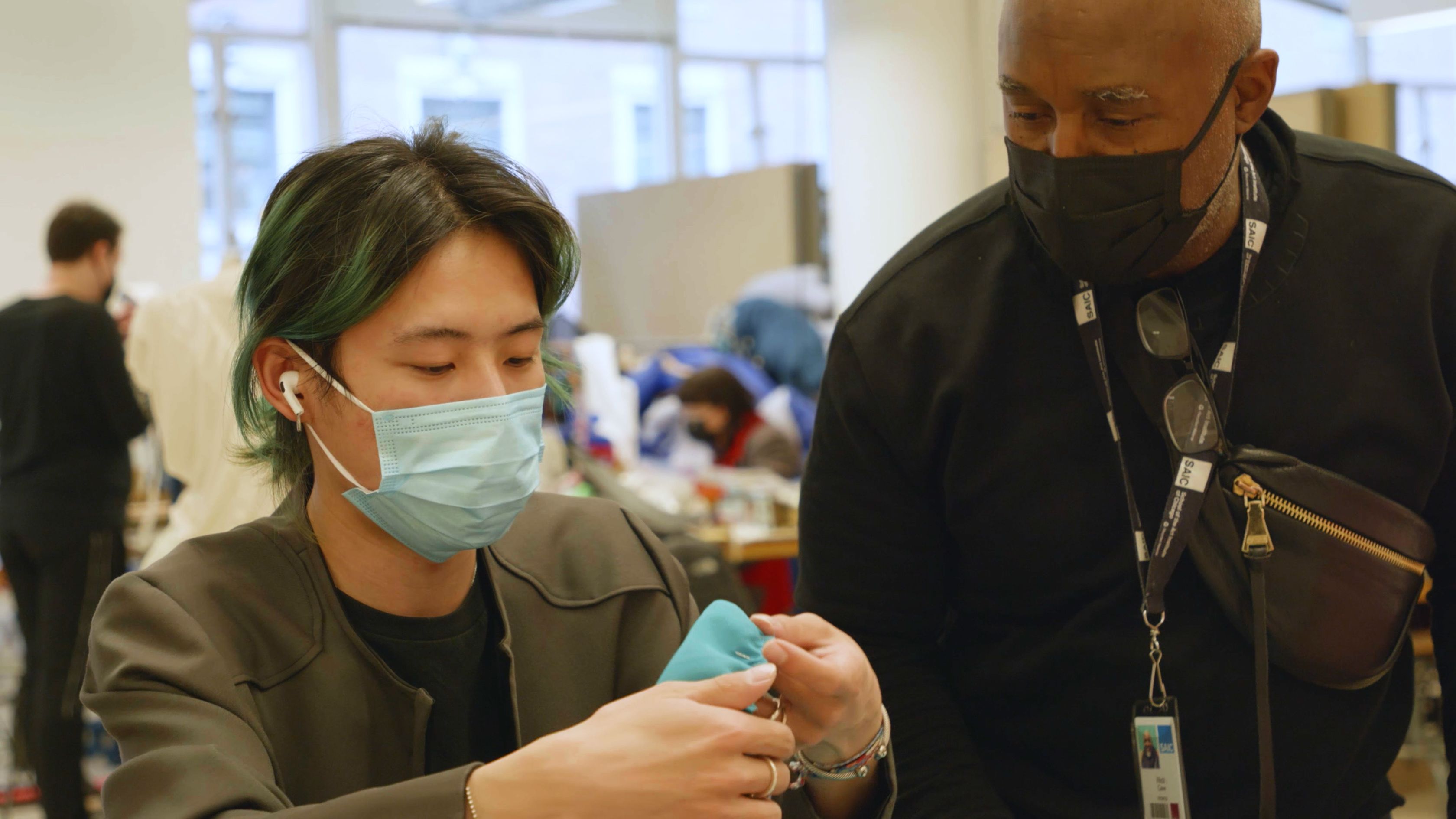
Cave working with a student at SAIC. Photo: Greg Stephen Reigh (BFA 2013)
Cave working with a student at SAIC. Photo: Greg Stephen Reigh (BFA 2013)
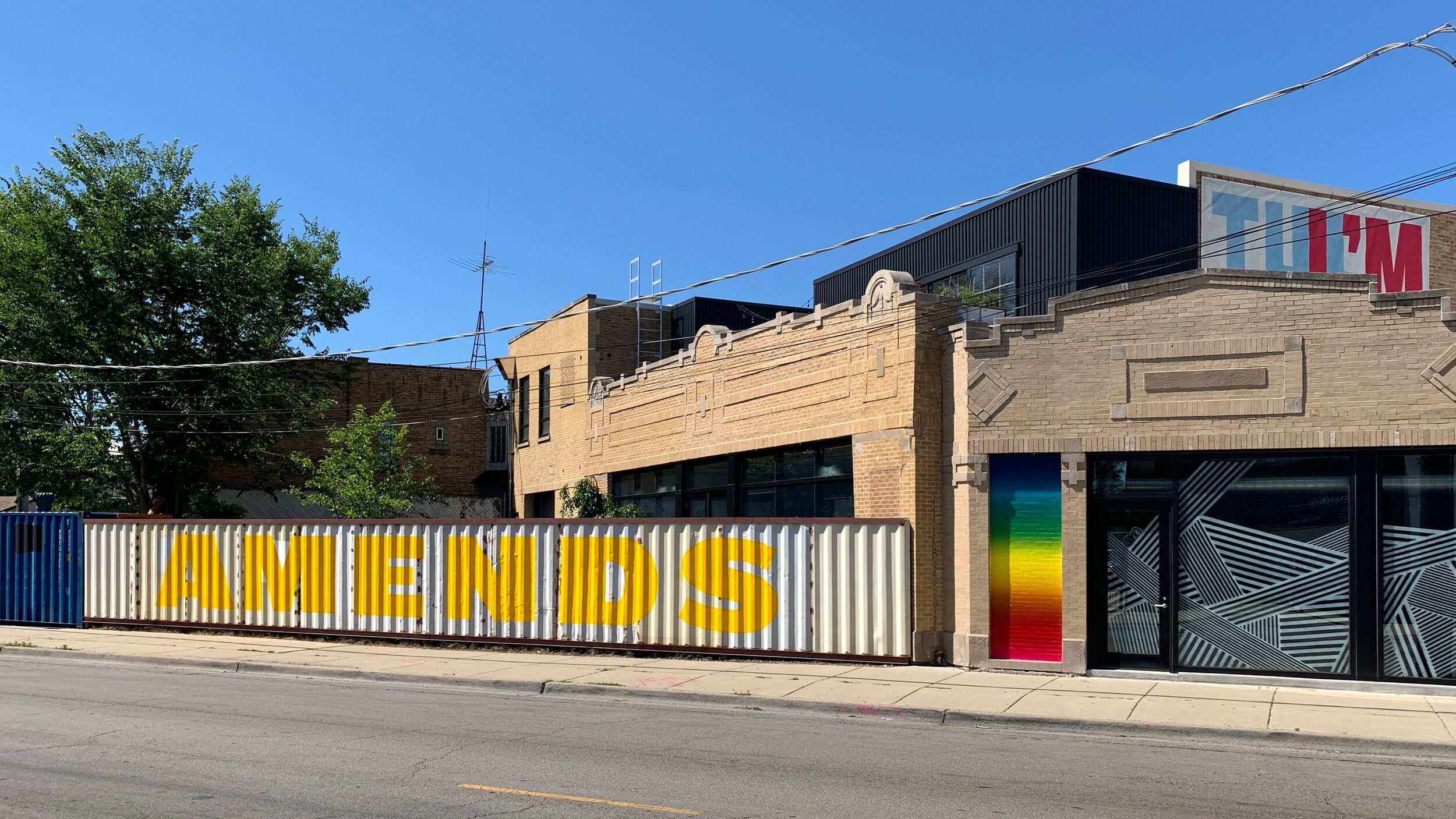
The exterior of Facility, Cave's multidisciplinary art space and studio
The exterior of Facility, Cave's multidisciplinary art space and studio
“It’s about this environment becoming a new, personal, singular world,” he tells one of his students after reviewing their exhibition designs. “This is a garment becoming something other.”
Many might be surprised that an artist of Cave’s stature—his work has been celebrated and exhibited all over the world—is still teaching, but community has always been essential to his practice. During a residency in Louisiana, he orchestrated bead-a-thon projects with local social service agencies; in New York, The Let Go invited audience members to participate in a dance-based town hall. And in 2019, he and his partner Bob Faust opened Facility, a multidisciplinary art space in Chicago that acts as both Cave’s studio and an incubator for young creatives. In all of his endeavors, Cave seeks to dismantle systems of oppression and empower individuals and communities.
“I'm an artist with civic responsibility,” Cave said. “I pull up my sleeves, I get deep into these communities. I don't bring the crew with me. I'm interested in working with who lives there, understanding the surrounding, and then bringing [the community] on board. And so it's really about the imprint that is left behind for me.”
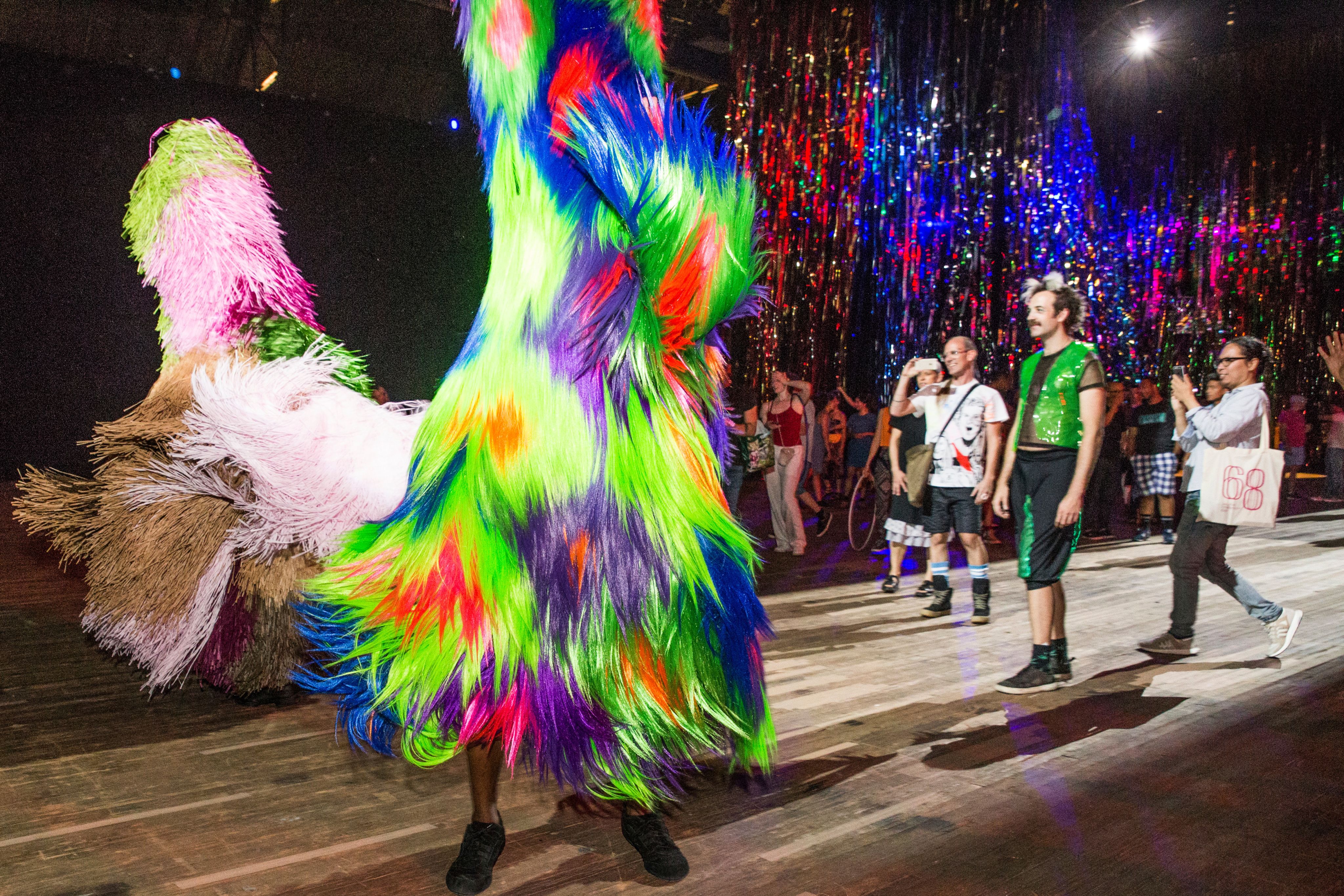
Scenes from The Let Go in 2018 at the Park Avenue Armory
Scenes from The Let Go in 2018 at the Park Avenue Armory
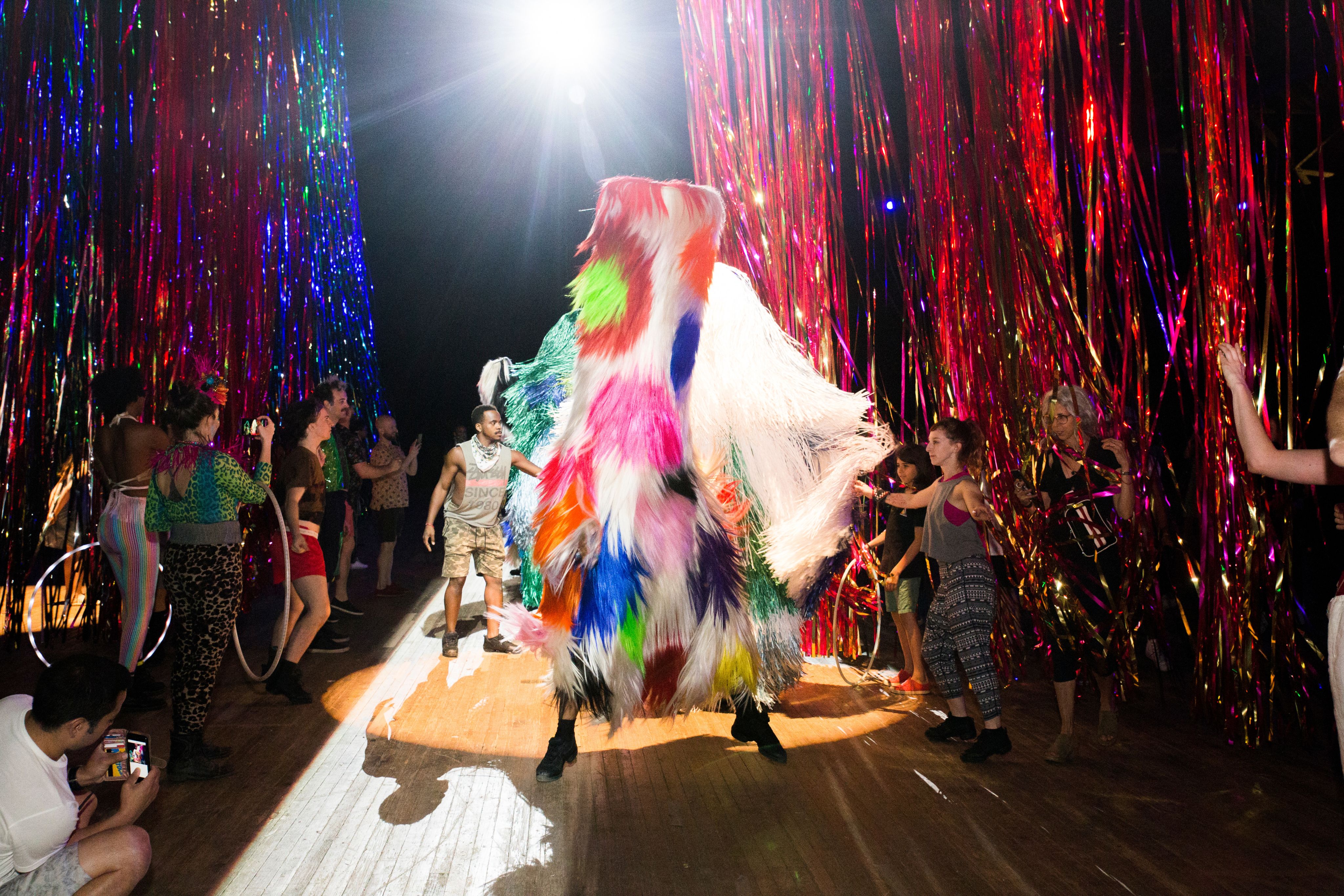
Scenes from The Let Go in 2018 at the Park Avenue Armory
Scenes from The Let Go in 2018 at the Park Avenue Armory
When he began to review his work in preparation for the exhibit at the MCA, he felt this even more keenly. “Looking back on this body of work, the word ‘light’ keeps coming into my thoughts,” he shared. “I realize that for three, four decades I have been doing all that I can to just shine the light on racism. And so it was really interesting for me to understand that I have been very much connected to a purpose. I understand why I'm here and the work that I'm supposed to be doing.”
Cave’s commitment to those who may be considered “others” by society is even evident in the exhibition title itself: Forothermore. As with everything Cave does, the show is expansive and inclusive; it will feature public performances and a collaboration with the DuSable Museum of African American History, which will display pieces from the collection and dedicate space to function as a teaching lab.
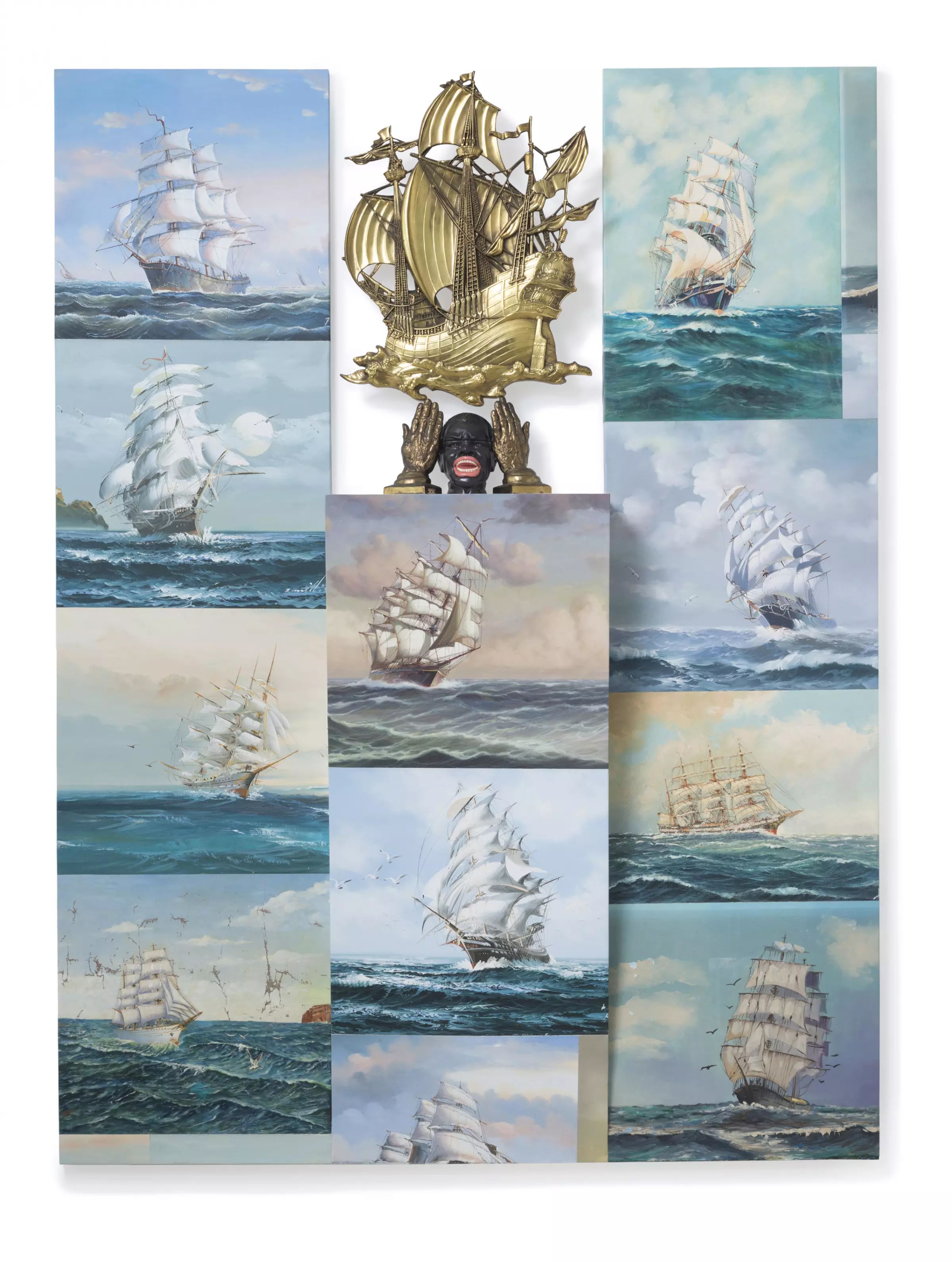
Nick Cave, Sea Sick, 2014, mixed media including oil paintings, ceramic container, cast hands, and plastic ship. 96 x 72 x 10 1/2 inches
Nick Cave, Sea Sick, 2014, mixed media including oil paintings, ceramic container, cast hands, and plastic ship. 96 x 72 x 10 1/2 inches
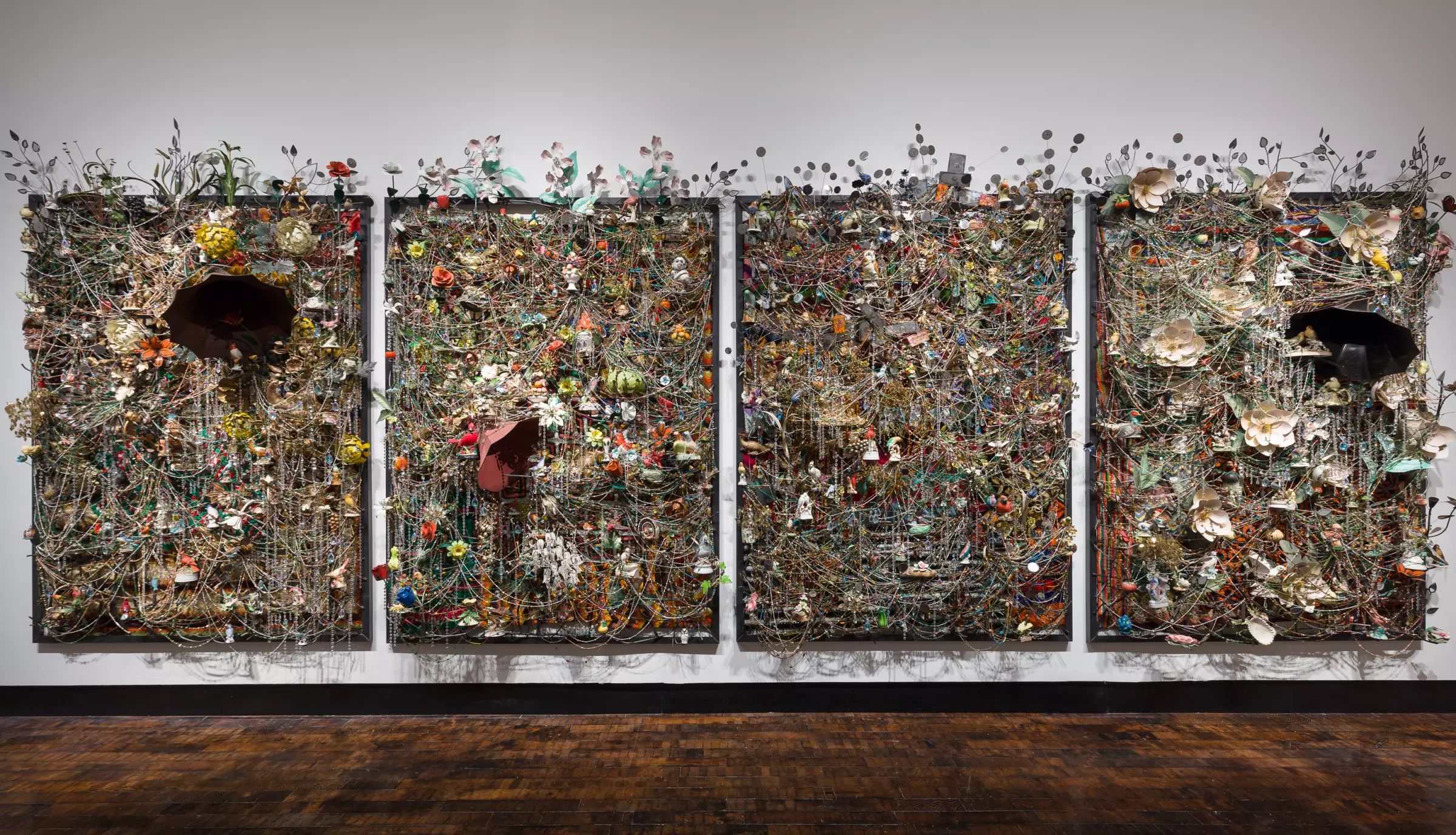
Nick Cave, Wall Relief, 2013, mixed media including ceramic birds, metal flowers, afghans, strung beads, crystals, and antique gramophone. 4 panels, each: 97 x 74 x 21 inches
Nick Cave, Wall Relief, 2013, mixed media including ceramic birds, metal flowers, afghans, strung beads, crystals, and antique gramophone. 4 panels, each: 97 x 74 x 21 inches
"Looking back on this body of work, the word ‘light’ keeps coming into my thoughts. I realize that for three, four decades I have been doing all that I can to just shine the light on racism."
It’s especially meaningful to Cave that this show will take place in Chicago, his home of more than three decades. “Chicago is a great city. It's a city where you can experiment. You can sort of test the grounds, fail, and get back up,” he said. “The opening hasn't even happened, and I am so feeling the love. I am humbled. I am thrilled. I am curious about how it’s going to serve.”
Though he has a major show on the horizon, on any given weekday, Cave can still be found in one of SAIC’s classrooms on Wabash Avenue, inspecting embroidery and laughing with his graduate students. Through his many projects, Cave has grown to know who he is as an artist, and it’s obvious he continues to find joy in helping others do the same. “I get so excited on the first day of class,” he shared. “We have two years to get our students to a place where they know how to trust themselves.”
Nick Cave: Forothermore will be exhibited at the Museum of Contemporary Art Chicago from May 14 through October 2.
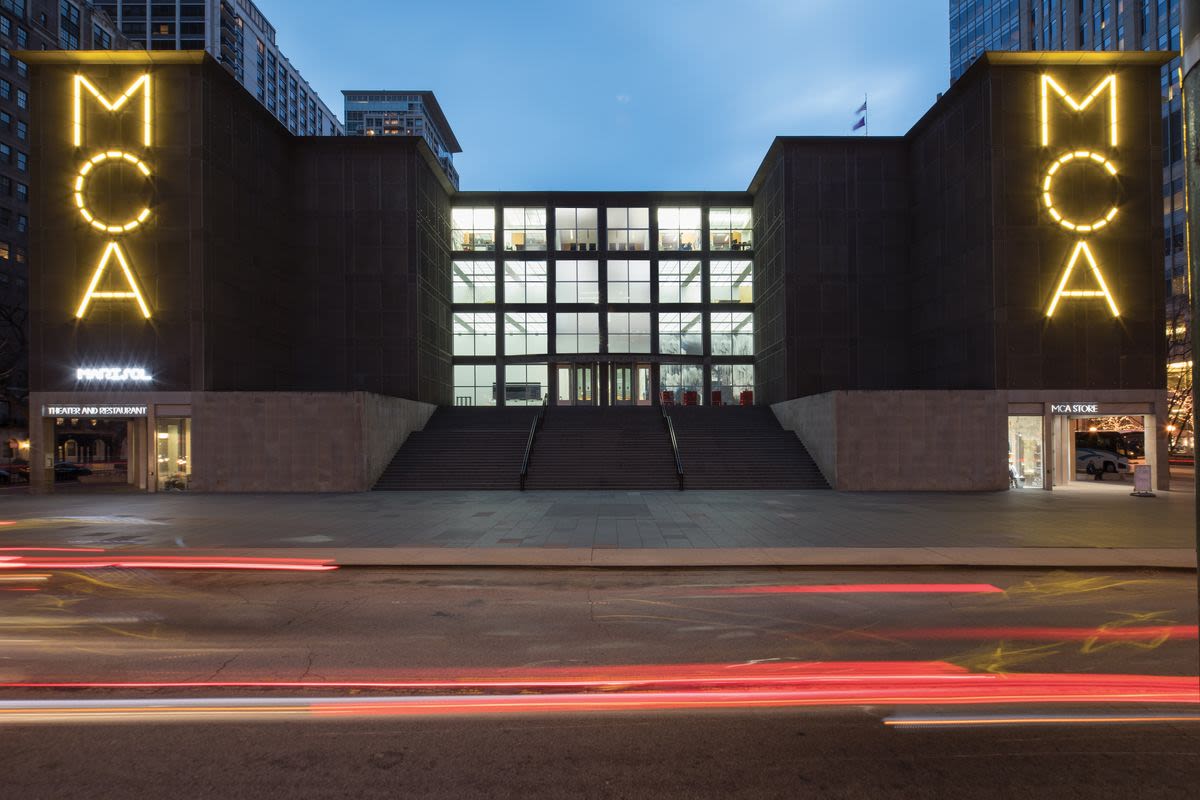
The exterior of the Museum of Contemporary Art Chicago
The exterior of the Museum of Contemporary Art Chicago
